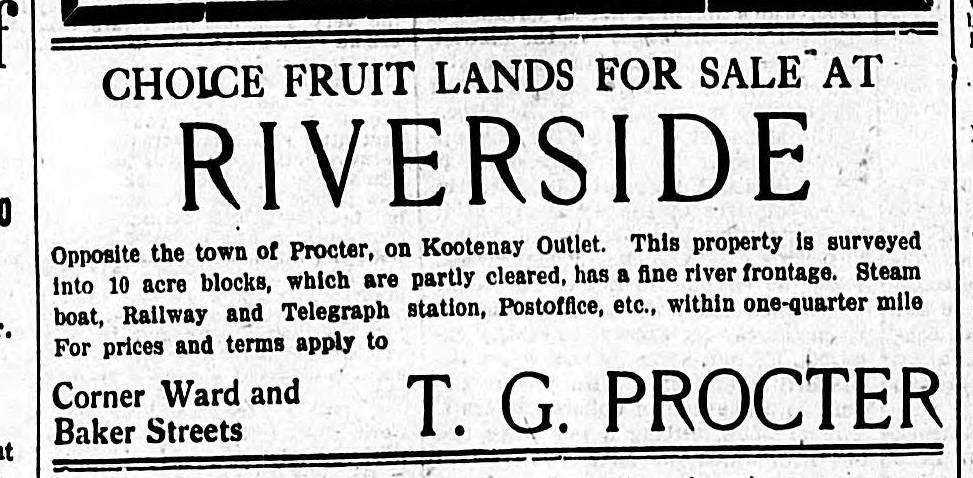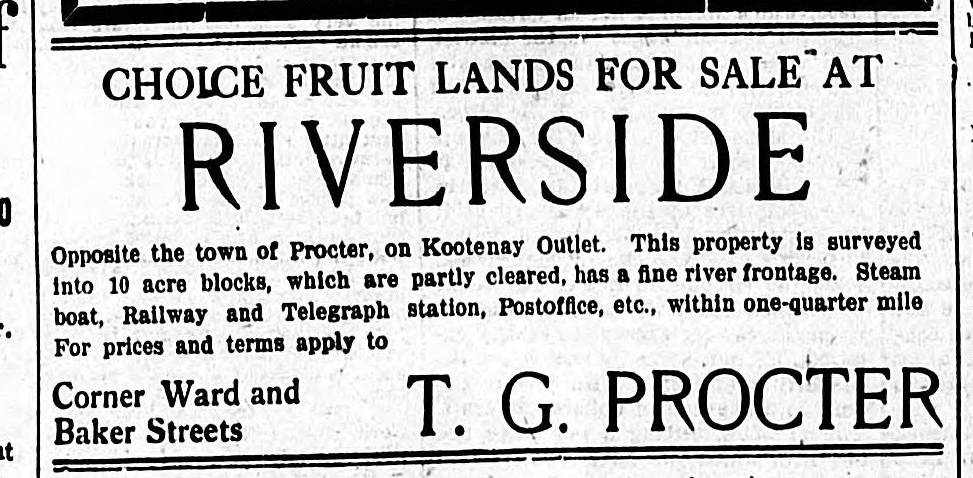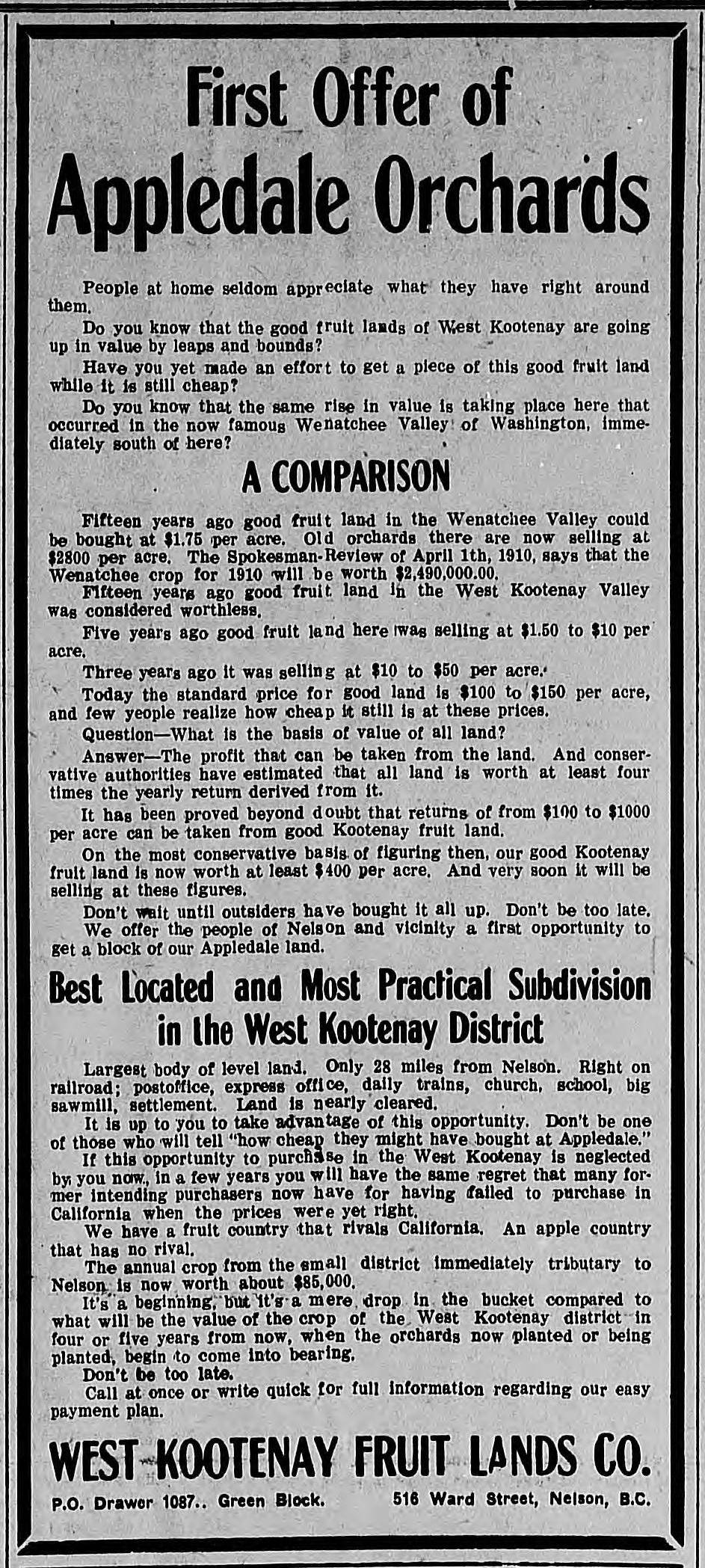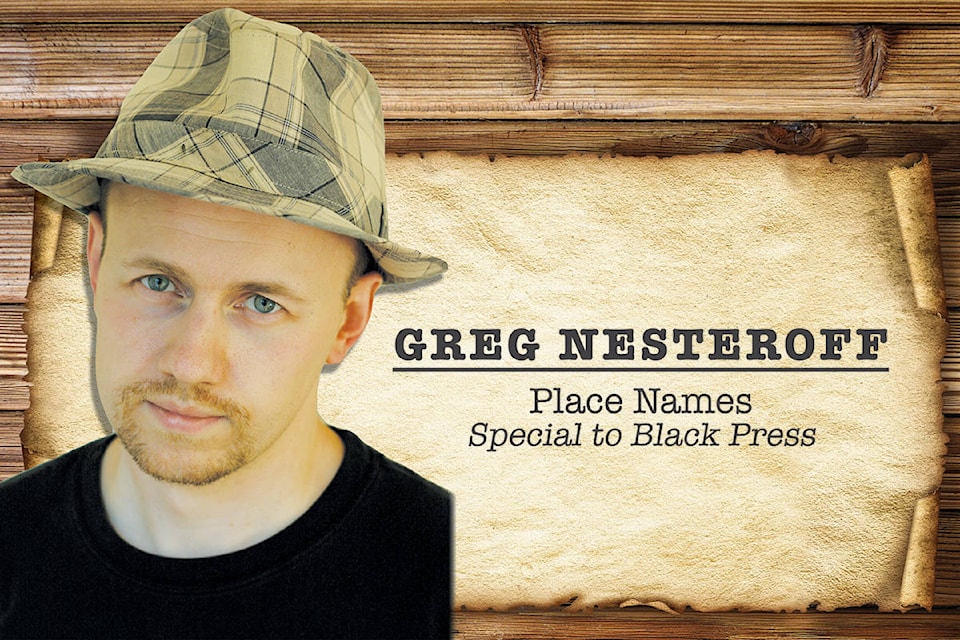A series on West Kootenay/Boundary place names
Thanks to Touchstones Nelson and UBC, the Nelson Daily News has now been placed online from 1902 to 1911, with the rest of the issues up to 1920 expected to be added in the coming weeks and months.
Previously quite a few early Kootenay/Boundary weekly papers were available online, but this is the first daily to be digitized.
It opens up all sorts of opportunities to find earlier references to names we’ve already covered and additional insight into how they came to be.
(Once 1912 is added, we’ll be able to search for Kinnaird and South Slocan, both believed to have been named that year, under murky circumstances.)
BURNT FLAT/FEENEYVILLE
Burnt Flat is close to the Highway 3/6 junction where you turn to head to the Nelway border crossing south of Salmo.
The Daily News of April 25, 1909 noted that a post office was to be established there on William Feeney’s ranch, with Feeney as postmaster: “The Salmo river country is rapidly settling up and the ranchers now have to walk as far as 18 miles for their mail; with the establishment of a post office at Feeneyville this will be of great assistance to residents in that part.”
The name Feeneyville doesn’t appear before or after this isolated use. The post office opened as Burnt Flat on Nov. 1, 1909 and closed in 1916.
KNOB HILL AND SALMOITES
The same issue of the Daily News that carried news of the forthcoming Burnt Flat post office also revealed the name of a Salmo neighbourhood that didn’t appear in our look at the subject: “The residents of Knob Hill are opening up Main street by putting a crossing across the railroad tracks, which means a great convenience to that part of the town.”
We can guess that this was the area now known as Hearn Hill, which includes parts of Maclure Avenue and Second and Fourth streets.
Meanwhile the issue of April 4 noted that “Salmoites are still looking for that telphone line to Nelson.”
An earlier installment in this series suggested, erroneously, that there was no name for people from Salmo and proposed Salmoans.
SALMON RAPIDS
The phantom townsite of Salmon Rapids, at the junction of the Salmo River and its south fork, was first advertised in the Daily News on July 5, 1910. But it turns out the name had been chosen some months earlier.
The Jan. 16 issue reported: “Green Bros. & Burden, surveyors, have finished surveying the new townsite on the Salmon river, known as the Salmon Rapids townsite. Adjoining the townsite they are laying out in 10 and 20-acre blocks some 4,000 acres.”
Salmon Rapids was a total bust. It was mentioned for the final time on Jan. 8, 1912.
RIVERSIDE
Previously the earliest known mention of the Riverside addition to Balfour was an ad taken out by Thomas Procter in the Daily News of June 6, 1906. But the ad actually first showed up on Feb. 14 of that year, offering “choice fruit lands for sale.”
Riverside was subsumed by Balfour sometime after 1910.
APPLEDALE
Until now, the earliest known reference to the Slocan Valley community of Appledale was a letter dated September 1910.
But the Daily News on April 7 of that year carried a story about J.L. Hirsch buying 3,000 acres on the Slocan River from lumberman John B. Winlaw: “It is the intention of Mr. Hirsch to subdivide the entire tract into five and 10 acre blocks, and to place it on the market under the name of Appledale Orchards …”
Despite ads promising “a fruit country that rivals California,” the land proved largely unsuitable — much to the chagrin of those who bought property sight unseen.
KOCH SIDING
The post office at Koch Siding, in the Slocan Valley, opened on Feb. 1, 1906, while the name was added to the CPR timetable on May 6, 1906. But the hotel arrivals published in the Daily News of Nov. 11, 1905 included an A. Wallace of Koch Siding staying at the Madden.
SMELTER HILL
We recently noted that Nelson’s Rosemont neighbourhood was once called Smelter Hill, after the Hall Mines smelter located there. But while the earliest use previously cited was from 1910, we now know it had that name by July 19, 1903, when the Daily News listed it as an address on the voters list.



